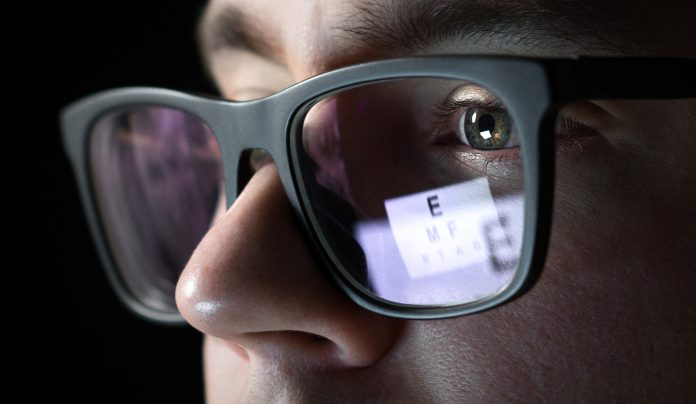In recognition of World Glaucoma Week, The Association of British Dispensing Opticians (ABDO) highlights how a simple eye test is a key way to detect Glaucoma
Glaucoma affects more than 500,000 people in England and Wales alone, and is a leading cause of preventable blindness. It principally affects those age 40 and over: 2% of people aged 40+ have glaucoma and this rises to almost 10 per cent of those over 75. People of African or African-Caribbean origin have about four times the risk compared to Caucasians.
Everyone’s eyes are filled with fluid. This fluid circulates through a tiny meshwork round the edge of your iris. In some people the pressure of the fluid is raised and damages the optic nerve, which carries messages from your eye to your brain. In other people, although their pressure reading is normal there can still be damage taking place. In many people it can be a combination of nerve weakness and raised pressure which predisposes them to glaucoma.
Eye examination
Glaucoma can run in families: if you have a close relative with the condition you have four times the chance of developing it, and people aged 40 and over with a close relative with glaucoma are entitled to a free NHS eye examination.
When you go for a routine eye test the optometrist will carry out some tests to help them get a picture of your overall eye health. They will:
- Look at the back of your eye with a light. In glaucoma, the ‘optic nerve head’, where the optic nerve joins the eye, changes appearance, which can be seen using an ophthalmoscope
- Measure the pressure in your eye – this can be done using an instrument that blows a puff of air on the eye or using a small probe that rests gently on the surface of your eye
- Check your field of vision – you will be asked to put your chin on a rest, one eye is covered, and you look at a screen where small spots of light will flash up one after another
Eye pressure
If your eye pressure is raised your optometrist may invite you back for a further check to see if this is a one-off or always the case. If the optometrist suspects signs of glaucoma they will write a letter explaining this to your GP or local referral centre depending on your local NHS. Your optometrist will be able to advise you of the next steps which might include an appointment with a eye specialist in the community or the local eye unit. At this appointment you will have tests that are similar to those at the opticians, plus further assessments.
NICE recommends that to diagnose glaucoma, the specialist eye doctor, an ophthalmologist, should:
- Check the pressure in your eye using ‘Goldmann applanation tonometry. This is a highly accurate method of measuring the pressure in your eye. The ophthalmologist will use eye drops with this test.
- Examine your eye with a special device to measure the thickness of the cornea, the clear front part of your eye.
- Assess the depth of the angle in front of your iris leading to the meshwork that the fluid should pass through.
- Check your field of vision. Just like at the opticians, you will be asked to put your chin on a rest and look at a screen where small spots of light will flash up one after another.
- Use eye drops to get a good clear view of the back of the eye to see if the head of the optic nerve is showing any signs of change due to glaucoma. The drops used in this test can leave your vision blurred for a short while after the test. Do not attempt to drive yourself home afterwards.
Glaucoma treatment
Glaucoma can be treated. The main treatment for glaucoma is the regular use of eye drops which are effective and painless. Laser treatment and drainage surgery are used less commonly but have good outcomes.
Treatment can only protect the vision that you have which is why a regular sight test and early diagnosis is so important.
The International Glaucoma Association estimate that around 95 per cent of those diagnosed early with glaucoma in the UK will retain useful sight for life.
If you are confused by any of the terms used during your appointment or want to find out more, the International Glaucoma Association has a glossary on their website and can also answer questions through their Sightline, on 01233 648 164. www.glaucoma-association.com











